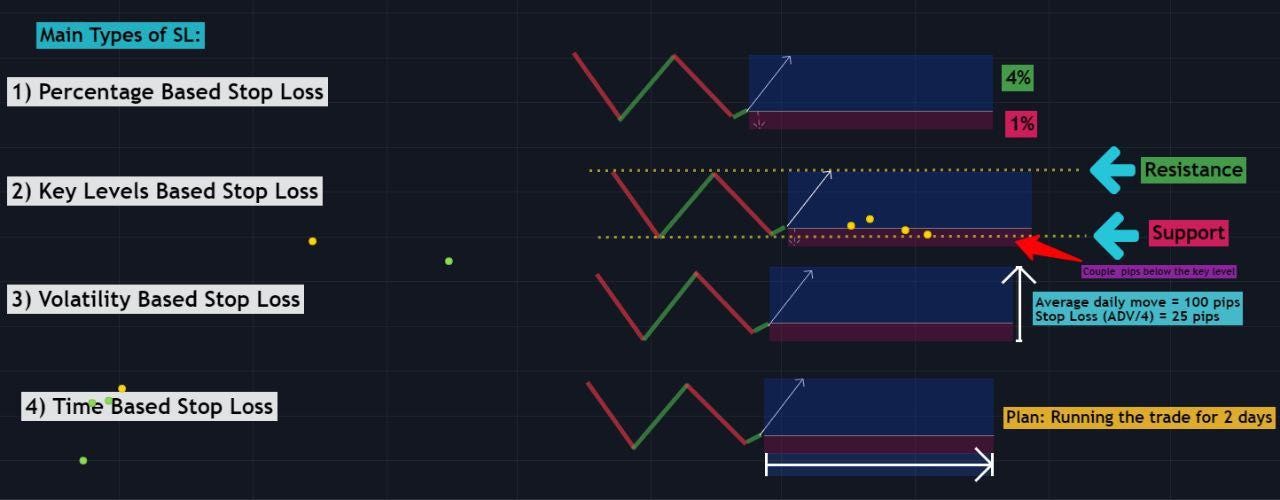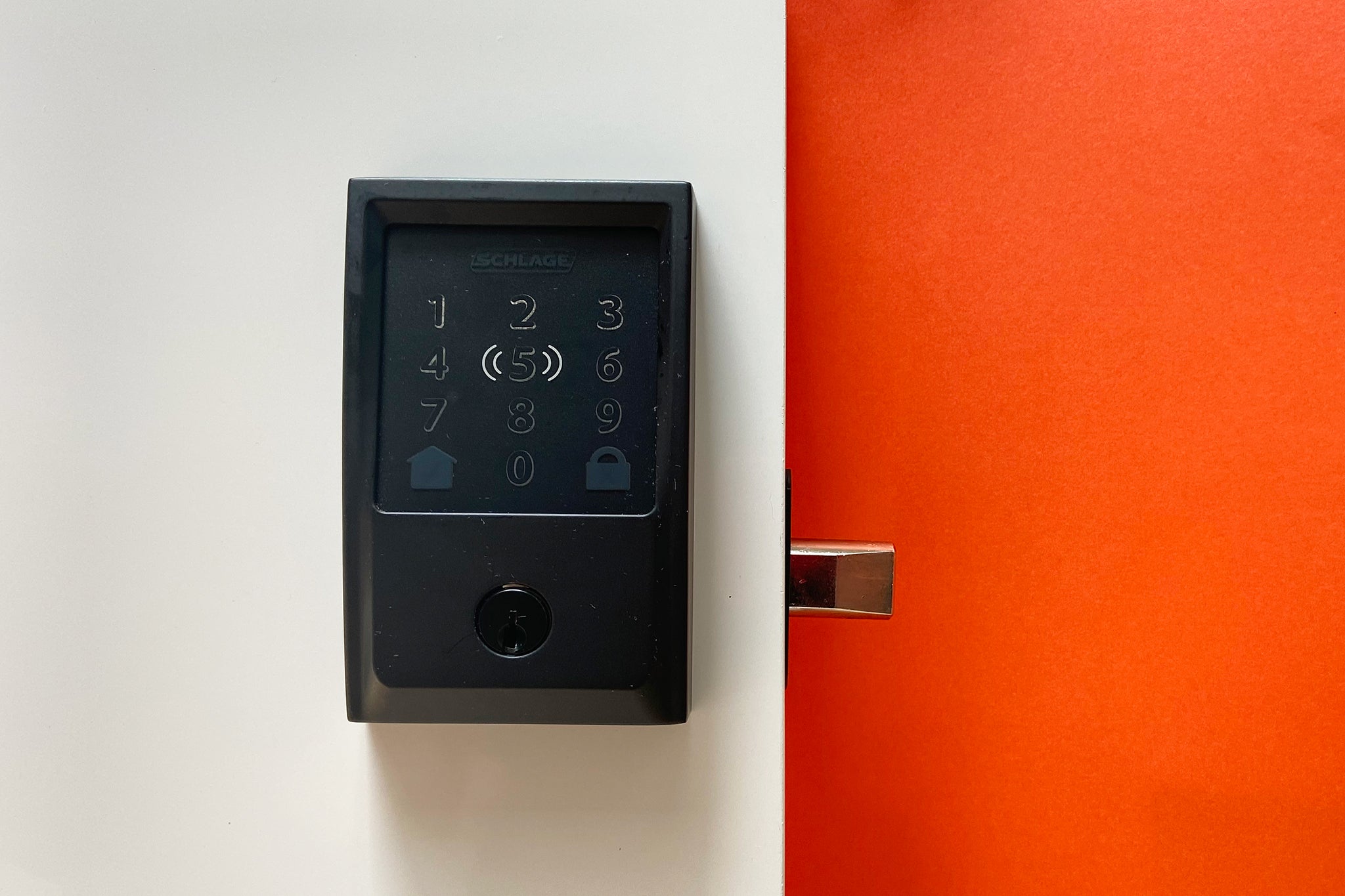Introduction
Welcome to the world of trading! Whether you are a seasoned trader or just starting out, it is essential to understand the various terms and strategies involved in the financial markets. One such term you will come across frequently is “SL” or “Stop Loss” in trading. In this article, we will delve into the meaning, importance, and functioning of SL in trading.
SL refers to a risk management tool used by traders to limit potential losses on a trade. It is essentially an order placed with a broker or platform that automatically closes a position when the price reaches a predetermined level. This level acts as a safety net, ensuring that losses are contained within acceptable limits.
Many novice traders mistakenly believe that trading is just about making profits. However, experienced traders understand that managing risk is equally, if not more, crucial to long-term success. This is precisely where the Stop Loss order comes into play. By setting a SL, traders can protect their capital by defining the maximum amount they are willing to lose on a specific trade. It acts as a safety mechanism, preventing emotions from taking over and leading to irrational decisions.
Without a SL in place, traders risk catastrophic losses if the market moves against their position. In highly volatile and unpredictable markets, such losses can be devastating and wipe out a significant portion of a trader’s account. Therefore, understanding and effectively utilizing SL orders is vital to minimizing risk and preserving capital.
In the following sections, we will explore how SL works, the different types of SL orders, best practices for setting SL levels, common pitfalls to avoid, and the overall benefits of implementing SL in trading. By the end of this article, you will have a comprehensive understanding of SL and its significance in successful trading strategies.
Definition of SL in Trading
Stop Loss, commonly abbreviated as SL, is a risk management mechanism used in trading to limit potential losses on a position. It is an order placed by a trader with their broker or trading platform that specifies the price level at which the position should be automatically closed. The purpose of the SL order is to protect traders from excessive loss and to help them adhere to their risk management strategies.
When a trader enters a trade, they have a specific exit strategy in mind, either to take profits or cut losses. The SL order serves as an exit strategy for mitigating losses. By setting a Stop Loss level, traders define the maximum amount they are willing to lose on a particular trade. If the market moves against their position and reaches the designated SL level, the position is closed, thus preventing further losses.
The SL level is usually set based on technical analysis, support and resistance levels, or other indicators that indicate potential reversal points. Traders often determine their SL based on a certain percentage of the trade’s entry price or a fixed price level that aligns with their risk tolerance.
It is important to note that the SL order is not a guarantee that the trader will exit the trade exactly at the specified price. In situations where there is high volatility or slippage, the execution price may differ slightly from the SL level. This is known as slippage and can occur due to rapid market movements, gaps, or delays in order execution.
SL orders can be placed on various types of trading instruments, including stocks, commodities, forex, and cryptocurrencies. They are a standard feature offered by most reputable brokers and trading platforms.
Overall, the primary purpose of a Stop Loss order is to limit potential losses and protect traders’ capital. By implementing SL effectively, traders can manage their risk, maintain discipline in their trading approach, and increase their chances of long-term success.
Importance of SL in Trading
Stop Loss (SL) orders are an essential tool for traders due to their significant role in managing risk and preserving capital. Let’s explore the importance of SL in trading:
1. Limiting Potential Losses: The primary purpose of implementing SL orders is to limit potential losses on a trade. By setting a predetermined level at which a position will be closed, traders can prevent substantial losses in the event of unfavorable market movements. This risk management aspect is crucial for protecting capital and avoiding catastrophic losses.
2. Emotional Control: Trading can be an emotional rollercoaster, with fear and greed often driving decision-making. Implementing a SL order helps traders overcome emotional biases. It provides a clear and objective exit strategy, removing the temptation to hold onto losing positions in the hopes of a reversal. This promotes disciplined trading and protects traders from impulsive or irrational decisions.
3. Consistency in Risk Management: Successful traders understand the importance of consistency in risk management. By utilizing SL orders, traders can set predefined levels of acceptable risk for each trade. This ensures that risk is managed consistently and aligns with their overall trading strategy. Consistency in risk management is vital for long-term profitability and sustainable trading.
4. Enhancing Trade Planning: Setting a SL level requires traders to analyze and plan their trades thoroughly. It involves considering key factors such as support and resistance levels, market conditions, and risk-reward ratios. By incorporating SL orders into trade planning, traders can make more informed decisions, increasing the probability of successful trades.
5. Peace of Mind: Trading involves uncertainties and risks. Implementing SL orders provides traders with peace of mind, knowing that their potential losses are limited. This peace of mind allows traders to focus on trade execution, market analysis, and overall strategy without constantly worrying about adverse market movements.
6. Adaptability and Flexibility: SL orders offer adaptability and flexibility in trading strategies. Traders can adjust their SL levels based on market conditions and the current volatility of the instrument being traded. This flexibility allows traders to adapt to changing market dynamics while still effectively managing risk.
7. Learning Opportunity: Stop Loss orders also provide valuable learning opportunities for traders. By analyzing trades that triggered SL orders, traders can assess their strategy, identify areas for improvement, and refine their trading approach. These learning experiences contribute to the growth and development of traders over time.
Overall, the importance of implementing SL orders in trading cannot be emphasized enough. They play a vital role in controlling risk, maintaining discipline, and safeguarding capital. Traders who understand and effectively utilize SL orders have a significant advantage in navigating the unpredictable nature of the financial markets.
How SL Works in Trading
Stop Loss (SL) orders play a crucial role in managing risk and protecting capital in trading. Let’s dive into how SL works:
When a trader enters a new position, they have a specific level in mind at which they want to exit the trade to limit potential losses. This level is known as the Stop Loss order. The trader sets the SL order with their broker or trading platform, specifying the price at which they want the position to be automatically closed.
Once the SL order is set, it remains in effect until the trade either reaches the target profit level or the predefined SL level. If the market moves against the trader’s position and reaches the SL level, the broker or platform will execute a market order to close the position at the prevailing market price.
It’s important to note that SL orders do not guarantee execution at the exact specified price. In fast-moving markets or instances of high volatility, slippage may occur, resulting in the trade being closed at a slightly different price than the designated SL level.
SL orders are typically placed below the entry price for long positions and above the entry price for short positions. This ensures that if the market moves against the trade, the SL order is triggered before significant losses occur.
Traders often set their SL levels based on technical analysis, support and resistance levels, or key indicators that suggest potential reversal points. They may also consider factors such as volatility, market conditions, and their risk tolerance when determining the SL level.
It’s important to review and adjust SL levels as the trade progresses. This can include moving the SL level to breakeven or adjusting it to lock in profits as the trade moves in the trader’s favor.
SL orders are not only used for limiting losses but can also be utilized to protect profits. Traders may employ trailing stop orders, where the SL level is adjusted dynamically as the price moves in their favor. This allows traders to capture more significant profits if the market continues to move in their desired direction.
Overall, SL orders provide traders with a crucial risk management tool. They enable traders to define their acceptable level of risk, preserve capital, and maintain discipline in their trading approach. By utilizing SL effectively, traders can navigate the ever-changing financial markets with more confidence and control.
Different Types of SL Orders
Stop Loss (SL) orders come in various types, providing traders with flexibility and options to manage risk effectively. Let’s explore the different types of SL orders:
1. Market SL Order: This is the most common type of SL order. When the market reaches the specified SL level, the trade is executed at the prevailing market price. Market SL orders ensure a quick execution but may experience slippage during highly volatile market conditions.
2. Limit SL Order: A limit SL order is executed at a specific price or better when the market reaches the SL level. Traders can set a limit price to minimize slippage and control the execution price. However, if the market moves rapidly, the order may not be filled if the limit price is not reached.
3. Trailing Stop Order: A trailing stop order is dynamic and adjusts the SL level as the market price moves in the trader’s favor. It follows the price “trail” at a defined distance, allowing traders to protect profits while still giving room for potential further gains. If the market reverses and reaches the trailing stop level, the trade is closed.
4. Guaranteed SL Order: Also known as guaranteed stop loss, this order ensures that the position is closed at the specified SL level, regardless of any slippage. However, brokers often charge a premium for this type of order, as they bear the responsibility of executing it at the exact price.
5. Time-Based SL Order: This type of SL order is placed with a predefined time frame. If the trade does not reach the desired profit level within the specified time, the SL order is triggered to close the position. Time-based SL orders are particularly useful for traders who want to exit positions if the expected move does not materialize within a specific period.
6. Volatility-Based SL Order: Volatility-based SL orders adjust the SL level based on market volatility. Traders can set the SL level to a certain percentage or multiple of the average true range (ATR) indicator. This allows the SL level to adapt to changing market conditions and prevent premature stop-outs during periods of high volatility.
It’s essential for traders to understand the different types of SL orders and choose the most suitable one based on their trading strategy, risk tolerance, and market conditions. Each type of SL order offers its own advantages and considerations, so it’s crucial to carefully evaluate which one aligns with the trader’s objectives.
By utilizing the appropriate SL order type, traders can enhance risk management, maximize profitability, and stay in control of their trades even in volatile market environments.
Setting SL in Trading
Setting an appropriate Stop Loss (SL) level is a critical aspect of trading that requires careful consideration. Let’s explore the factors to consider when setting SL in trading:
1. Risk Tolerance: A trader’s risk tolerance plays a significant role in determining the SL level. Traders with a higher risk tolerance may set wider SL levels to give their trades more room for fluctuations, while those with a lower risk tolerance may prefer tighter SL levels to limit potential losses.
2. Technical Analysis: Technical analysis is a valuable tool for setting SL levels. Traders analyze charts, patterns, support and resistance levels, moving averages, and other indicators to identify optimal entry and exit points. These analysis techniques help traders determine suitable SL levels based on price action and market conditions.
3. Volatility and Market Conditions: Volatile markets require wider SL levels to accommodate fluctuations, while less volatile markets may allow for tighter SL levels. Traders need to consider prevailing market conditions and adjust their SL levels accordingly to avoid unnecessary stop-outs or excessive risk exposure.
4. Timeframe and Trading Strategy: The timeframe and trading strategy employed by a trader also influence the setting of SL levels. Short-term traders may require tighter SL levels due to their shorter holding periods, while longer-term investors may opt for wider SL levels to account for larger price swings over time.
5. Risk-Reward Ratio: Traders often consider the risk-reward ratio when setting SL levels. A positive risk-reward ratio ensures that potential profits outweigh potential losses. By setting SL levels that align with their desired risk-reward ratio, traders can maintain a balanced approach to risk management.
6. Review and Adjustment: Setting SL levels is not a one-time activity. Traders need to regularly review and adjust their SL levels as the trade progresses. They may consider moving the SL level to breakeven or trailing it to protect profits if the trade moves in their favor. Regular monitoring and adjustment help optimize risk management throughout the trade duration.
7. Backtesting and Historical Data: Traders can use backtesting and analyze historical data to evaluate potential SL levels for a trading strategy. By assessing past performance, traders can identify the effectiveness of different SL levels and refine their approach to setting SL based on empirical evidence.
It is crucial to set SL levels that provide adequate protection against potential losses while allowing trades enough breathing room for market fluctuations. Each trader’s SL levels will vary based on individual preferences, risk tolerance, and the specific characteristics of their trades.
By carefully considering these factors and consistently evaluating the appropriateness of SL levels, traders can effectively manage risk, enhance trading discipline, and increase the likelihood of achieving long-term trading success.
Common Mistakes to Avoid When Setting SL
Setting an appropriate Stop Loss (SL) level is crucial for effective risk management in trading. However, there are common mistakes that traders should avoid when setting their SL. Let’s explore these mistakes:
1. Setting SL Too Tight: One common mistake is setting SL levels too close to the entry price. While it may seem like a good way to minimize potential losses, it can result in premature stop-outs due to minor market fluctuations. Traders should consider market volatility and give trades enough room to breathe by setting SL levels at reasonable distances.
2. Ignoring Volatility: Failing to consider market conditions and volatility when setting SL is another common mistake. Different instruments and timeframes exhibit varying degrees of volatility. Traders should adjust their SL levels accordingly to account for potential fluctuations and avoid unnecessary stop-outs during highly volatile periods.
3. Neglecting Technical Analysis: Technical analysis provides valuable insights into market trends, support and resistance levels, and potential reversal points. Neglecting these important indicators when setting SL levels can lead to poor decision-making. Traders should use technical analysis tools and chart patterns to determine appropriate SL levels based on price action and market conditions.
4. Not Considering Risk-Reward Ratio: Ignoring the risk-reward ratio is a common mistake when setting SL levels. It’s important to ensure that potential profits justify the potential losses. Traders should aim for a positive risk-reward ratio by setting SL levels that align with their desired trade objectives.
5. Overcomplicating SL Placement: Some traders tend to overcomplicate the process of setting SL levels by using multiple indicators or unconventional methods. While it’s important to have a strategic approach, excessive complexity can lead to confusion and ineffective risk management. Traders should focus on using a few reliable indicators and techniques to set their SL levels thoughtfully.
6. Neglecting Regular Review and Adjustment: Neglecting to review and adjust SL levels as the trade progresses is a common mistake. Market conditions can change, and trades may exhibit different characteristics over time. Traders should regularly evaluate and, if necessary, adjust their SL levels to ensure they remain relevant and aligned with the current market dynamics.
7. Allowing Emotional Bias to Influence SL Placement: Emotions can cloud judgment when setting SL levels. Greed and fear can lead to either setting SL levels too wide or too tight. Traders should strive to remain objective and adhere to their predetermined risk management strategy rather than being swayed by emotions.
Avoiding these common mistakes when setting SL levels is crucial for successful risk management in trading. By setting SL levels with careful consideration of volatility, technical analysis, risk-reward ratios, and market conditions, traders can enhance their ability to protect capital and make informed trading decisions.
Benefits of Using SL in Trading
Implementing Stop Loss (SL) orders in trading offers several key benefits to traders. Let’s explore the advantages of using SL:
1. Risk Management: SL orders are an essential tool for risk management in trading. They help define the maximum amount a trader is willing to lose on a trade, limiting potential losses. By setting and adhering to SL levels, traders can effectively manage their risk exposure and preserve capital.
2. Protection Against Emotional Decisions: Trading can often be fueled by emotions like greed and fear, leading to irrational decision-making. SL orders provide a structured exit strategy, reducing the influence of emotions. Traders can remain disciplined by sticking to their predetermined SL levels, avoiding impulsive actions and potential costly mistakes.
3. Preservation of Capital: SL orders play a crucial role in capital preservation. They help prevent catastrophic losses by closing positions when the market moves against a trader’s position. Preserving capital is vital for long-term success, allowing traders to take advantage of future opportunities without being hindered by significant losses.
4. Trade Planning and Strategy: Incorporating SL orders into trade planning allows traders to develop and execute well-defined strategies. By setting SL levels based on technical analysis and market conditions, traders can make informed decisions and enhance their overall trade planning process. This helps in identifying optimal entry and exit points and maintaining consistency in trading strategies.
5. Flexibility in Trading: SL orders offer flexibility in trading approaches. Traders can adjust SL levels to accommodate changing market conditions, such as increasing or reducing the distance from the entry price. This adaptability allows traders to optimize risk management and adapt to market dynamics, increasing their chances of achieving profitable trades.
6. Peace of Mind: Having SL orders in place provides traders with peace of mind. Traders can trade with confidence, knowing that their maximum potential loss is predetermined. This peace of mind allows them to focus on analyzing the market, executing trades, and making sound trading decisions without constant worry about adverse market movements.
7. Learning Opportunities: SL orders present valuable learning opportunities for traders. Analyzing trades that triggered SL levels allows traders to evaluate their trading strategies, identify areas for improvement, and refine their approach. These learning experiences contribute to traders’ growth, development, and future trading success.
In summary, utilizing SL orders in trading offers a range of benefits that contribute to effective risk management, disciplined decision-making, and preservation of capital. By incorporating SL into their trading toolbox, traders can enhance their trading strategies, mitigate potential losses, and increase their chances of achieving long-term profitability.
Conclusion
Stop Loss (SL) orders are an indispensable tool for traders seeking to manage risk and protect capital in the financial markets. By setting predetermined levels at which positions will be automatically closed, SL orders provide a crucial safety net against excessive losses.
In this article, we explored the meaning and importance of SL in trading. A well-placed SL order limits potential losses and enables traders to adhere to their risk management strategies, preventing emotions from driving irrational decisions. SL orders also offer flexibility in trading strategies, allowing traders to adapt to changing market conditions and enhance their overall trade planning process.
Furthermore, we discussed the different types of SL orders and the factors to consider when setting SL levels. Avoiding common mistakes such as setting SL too tight, neglecting technical analysis, or allowing emotions to influence SL placement is essential for effective risk management.
Implementing SL orders brings numerous benefits to traders. By utilizing SL, traders can manage risk, preserve capital, and maintain discipline in their trading approaches. SL orders provide traders with peace of mind, allowing them to focus on analyzing the market and making informed trading decisions without constant worry. Moreover, SL orders present valuable learning opportunities for traders to evaluate their strategies and refine their approach for future trades.
In conclusion, understanding the significance of SL in trading and effectively utilizing SL orders can greatly contribute to the success of traders. By incorporating proper risk management techniques, traders can navigate the complexities of the financial markets with more confidence and control, ultimately increasing their chances of profitable trading outcomes.

























